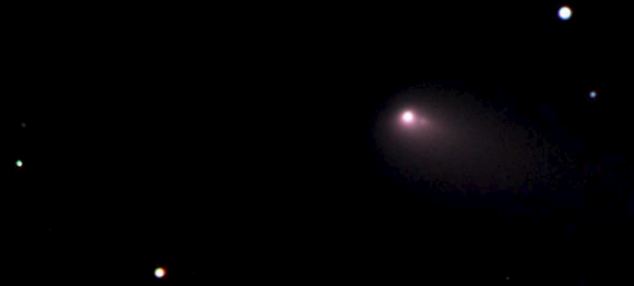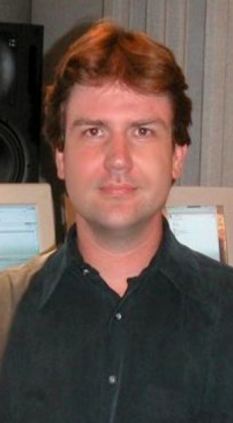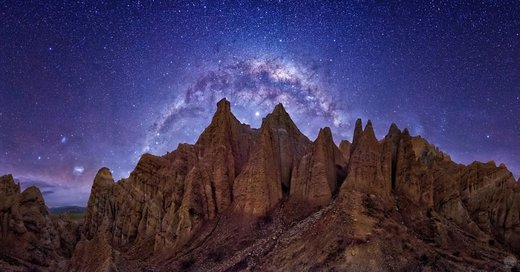
Musical instrument designer Nick Howes, 40, used the internet to access an online telescope as he sat at his desk in his office.
Mr Howes, of Cherhill near Calne, Wilts, logged on to a telescope in Hawaii and began staring into deep space. But he spotted a massive comet breaking up and was able to use the telescope to take photos.
Nick, who works for Yamaha, actually captured the moment the comet exploded, blowing a chunk the size of Mount Everest off one side.
He was the only person in the world to witness the dramatic event - with even American astronomers completely missing the opportunity.
The comet is known as Siding Spring after the Australian observatory where it was first spotted in 2007.

Nick's discovery has now been honoured by the International Astronomical Union and hailed by experts as a 'major astronomical discovery'.
Father-of-one Nick said: 'I had heard that a comet was passing so I tried to view it myself and used a telescope in Hawaii to have another look.
'But within about 10 minutes I spotted that it was blowing up. It was amazing. I contacted the International Astronomical Union and they confirmed I was the only one to make the discovery. I then made lots of frantic phone calls.'
Nick took the images from his office in London using the Faulkes Telescope Project in Hawaii last Thursday.
He used the £5million telescope to capture six images that show a chunk of ice known as a "dirty snowball" breaking away from the nucleus of the comet.
The following day a second set of images showed the new fragment is still trailing the comet, which is officially called C2007 C3. The online telescope project is run by experts at Cardiff University who say they are 'delighted' with Nick's result.
Dr Paul Roche, of Cardiff University, said: 'What this illustrates is what is achievable when amateur astronomers can get their hands on such a powerful telescope.
'As the nucleus of a comet is typically tens of kilometres across, this fragment is probably mountain-sized, and will become a small comet as it gradually separates from its parent.
'We hope this discovery will help encourage others to use the Faulkes Telescopes and lead to even more scientific discoveries.'
Nick has a small observatory himself at his home and has since been tracking the comet's progress.
It was first spotted in October and is heading away from Earth and will never been seen again.
The comet was first spotted by Donna Burton - so perhaps should have been called Donna's Comet or Burton's Comet. But it was instead named after the Siding Spring Observatory near Coonabarabran, 280 miles (500km) north-west of Sydney, Australia.
The Faulkes Telescope Project was launched in March 2004 as a way of helping to inspire school students to study science and maths.



Yeah, Right, All of them? That's what they want us to believe. I think there are some mighty big & hard ROCKS whizzing about "out there"...